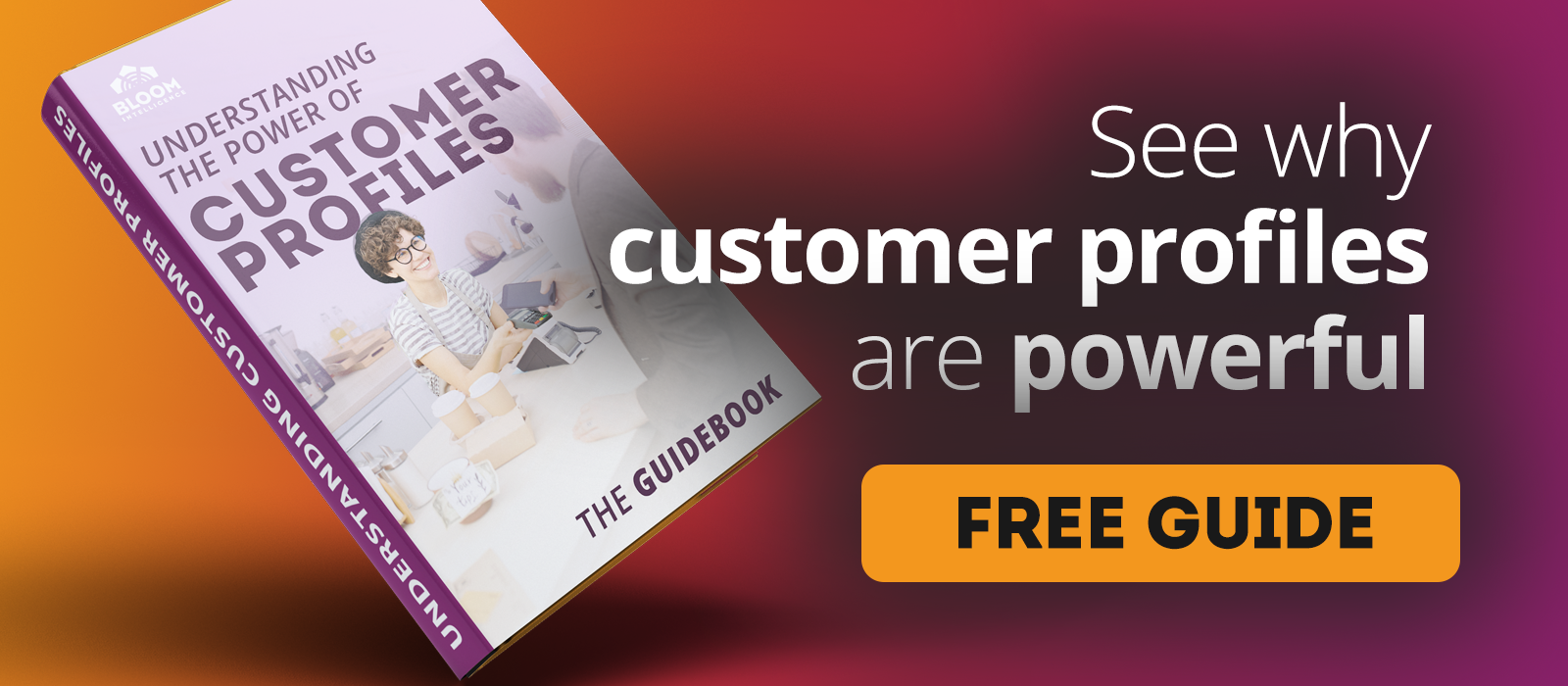Reservations Marketing for Restaurants
Learn how to use online reservations to increase guest engagement and improve marketing ROI.
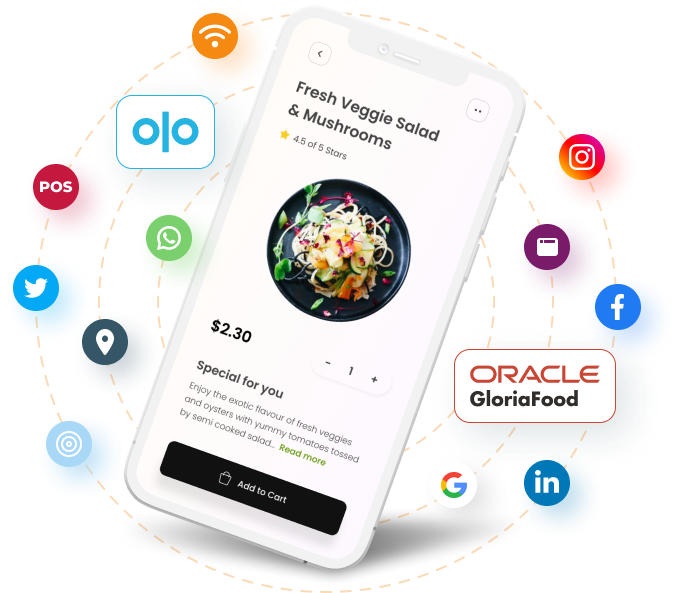
Scroll to explore
Reservations Marketing for Restaurants
Online reservation systems for restaurants have skyrocketed in popularity over the past several years. The recent pandemic has only amplified this exponential growth.
A recent study of 696 restaurant guests found that nearly one-third had made an online reservation.
And in 2022, OpenTable said it connected more than 1 billion people with restaurants each year.
Given these numbers, it’s clear why restaurants should consider implementing online reservation systems using software like OpenTable.
In the age of digitization, restaurants have increasingly harnessed technology to enhance their marketing and operations. A particularly transformative technology is the restaurant reservation system.
Not only does it streamline bookings and improve restaurant efficiency, but it also provides an often-overlooked opportunity: marketing.
By integrating your reservation system with a Customer Data Platform (CDP) like Bloom Intelligence, you can significantly refine your marketing strategies, resulting in higher guest satisfaction and loyalty.
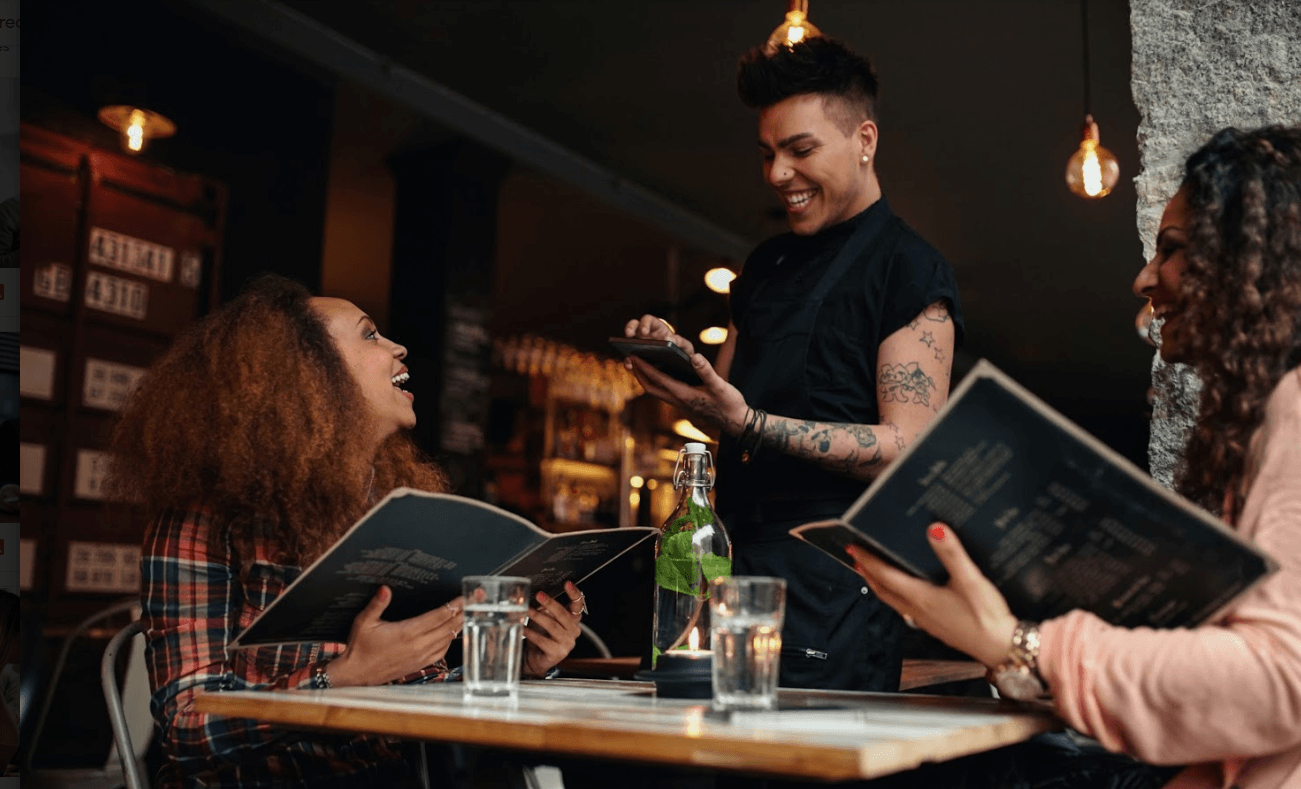
The Power of Data in Restaurant Reservation Marketing
The importance of data in today’s world cannot be overstated, and in the restaurant industry, it has become an essential tool to not only comprehend guests’ needs and preferences but to predict them.
By carefully harnessing this information through restaurant reservation systems, businesses can significantly bolster their reservation system marketing strategies.
Here’s a closer look at how data can power your restaurant marketing:
1. Personalized Marketing Campaigns
Understanding Guest Preferences: Every reservation contains subtle clues to the guest’s preferences. Are they booking for special occasions? Do they prefer certain cuisines? By aggregating and analyzing this data, restaurants can craft personalized marketing messages.
Customized Offers and Promotions: Sending birthday offers, anniversary discounts, or personalized suggestions based on previous orders can make guests feel special and unique. These gestures increase engagement and build long-term relationships.
Tracking Engagement: By monitoring how guests engage with personalized marketing, restaurants can continually refine and improve campaigns, ensuring that messages resonate with each guest segment.
2. Improved Guest Experiences
Menu Personalization: Knowing a guest’s dietary preferences or favorite dishes enables restaurants to offer curated menus during the reservation process or even upon arrival. This anticipatory service delights guests and enhances their dining experience.
Service Customization: If a guest prefers a certain table, or a particular waiter, or has any other specific requests, noting these preferences and acting upon them creates a sense of familiarity and care that can differentiate a restaurant in a crowded market.
Real-time Feedback Integration: With data, restaurants can solicit and integrate real-time feedback during or immediately after a meal, providing opportunities to immediately address any concerns and impress guests with responsive service.
3. Predictive Analytics
Demand Forecasting: Analyzing reservation trends helps restaurants forecast demand. This information is vital in staffing appropriately, ordering the right amount of inventory, and even scheduling special events or promotions.
Trend Identification: Are more guests booking vegan options? Is there a spike in reservations during certain holidays? Recognizing these patterns early allows restaurants to innovate and stay ahead of the competition.
Personalized Loyalty Programs: By predicting what offers or rewards a guest might prefer, restaurants can build more compelling and effective restaurant loyalty programs, encouraging repeat visits.
4. Enhancing Communication with Guests
Building a Relationship: Regular, personalized communication based on reservation data helps transform a single visit into an ongoing relationship. By showing guests that a restaurant remembers and values them, a bond of trust is created, leading to lasting loyalty.
The power of data in restaurant reservation marketing goes beyond transactional interactions.
It’s about building relationships, personalizing experiences, foreseeing trends, and crafting marketing that resonates with individual guests.
In a time where the competition is intense and guest expectations are ever-changing, leveraging data from reservation systems provides a competitive edge that goes beyond just filling tables.
By putting the guest at the heart of marketing strategies, restaurants not only drive repeat business but build a community of loyal patrons who feel seen, understood, and valued.
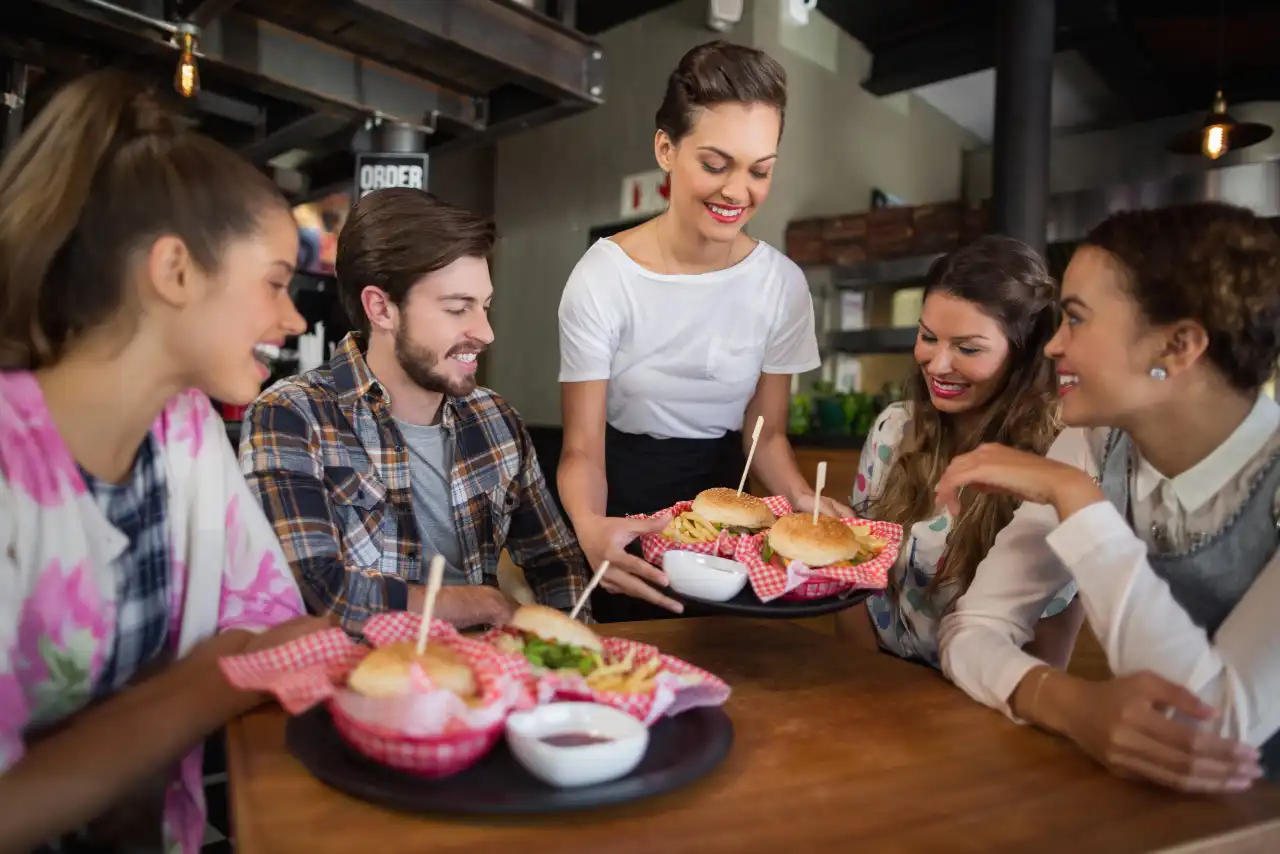
The Role of CDPs in Enhancing Marketing
A CDP like Bloom Intelligence goes a step further than just collecting data. It organizes, segments, and analyzes the data to provide actionable insights.
1. Segmentation
Behavior-Based Segmentation: By analyzing reservation history, spending patterns, and engagement with past marketing campaigns, CDPs can create distinct guest segments. This allows for more targeted and relevant marketing.
Demographic Segmentation: Understanding the age, location, and other demographic factors of guests helps tailor marketing messages more effectively. For instance, promoting family-friendly offers to guests who often reserve for large groups.
Custom Segmentation: CDPs enable restaurants to build custom segments based on unique business needs. For example, creating segments for guests who only visit during certain times or events.
2. Feedback Collection & Analysis
Real-Time Feedback Integration: CDPs allow for the seamless integration of feedback from multiple channels, including social media, online reviews, and in-restaurant surveys. This gives a comprehensive view of guest satisfaction and sentiment.
Bloom even uses advanced AI to automate review responses with unique, brand-centric responses.
Sentiment Analysis: Some advanced CDPs like Bloom include customer sentiment analysis to understand the underlying emotions in guest feedback. This nuanced understanding can provide insights into what truly resonates with guests.
Improvement Tracking: By continuously monitoring feedback and correlating it with changes in service or menu, CDPs help track what improvements are effective and what areas still need attention.
3. Loyalty Programs
Personalized Reward Systems: By analyzing individual guest data, CDPs can create personalized reward programs that resonate with different guest segments. These rewards can be customized based on past purchasing behavior, frequency of visits, or preferred menu items.
Loyalty Tracking and Management: Keeping track of individual guest rewards and redemption can be complex. CDPs automate this process, ensuring accuracy and encouraging more guests to engage with loyalty programs.
4. Enhancing Multi-Channel Marketing
Channel Optimization: CDPs can analyze which marketing channels are most effective for different guest segments. Whether it’s email, social media, or in-app notifications, this understanding helps in allocating marketing resources more efficiently.
Content Personalization: Beyond channel optimization, CDPs can also tailor the content and design of marketing materials for different segments. This ensures that the message is not only delivered through the preferred channel but is also crafted in a way that resonates with the individual guest.
Integration with Other Tools: CDPs often integrate with other marketing and sales tools, like reservation systems, creating a seamless flow of data and insights. This helps in creating a unified view of the guest, improving overall marketing strategy and execution.
The role of CDPs in restaurant marketing is multifaceted and extends well beyond mere data management.
From advanced segmentation and feedback analysis to crafting highly personalized loyalty programs and multi-channel marketing strategies, CDPs offer a robust set of tools to engage guests on a deeper level.
In an environment where guests are inundated with generic marketing messages, the personalized approach enabled by CDPs can set a restaurant apart.
By leveraging a platform like Bloom Intelligence, restaurants can transform data into meaningful interactions, turning guests into loyal patrons and advocates for the brand.
The future of restaurant marketing is not just about reaching more people, it’s about reaching the right people with the right message at the right time, and CDPs are the key to unlocking this potential.
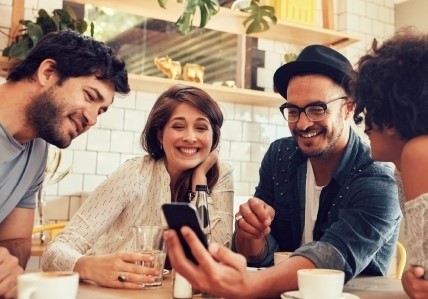
Bridging the Gap Between Reservations and Marketing
It’s essential to understand that the reservation system is not just a booking tool. It’s a communication bridge between the restaurant and its guests. By pairing it with a robust CDP:
Restaurants can communicate real-time changes in schedules, special events, or promotional offers.
They can offer guests tailored experiences even before they step into the restaurant, making them feel valued.
Restaurants can also gather post-dining feedback seamlessly, showing guests that their opinion matters.
1. Enhanced Communication with Guests
Real-Time Updates and Notifications: By integrating reservation systems with marketing channels, restaurants can send real-time updates about bookings, changes in schedules, or special events. This keeps guests informed and creates a sense of transparency and trust.
Personalized Pre-Dining Engagement: From the moment a reservation is made, personalized marketing can start. Sending a thank-you email, offering a special discount on a favorite dish, or suggesting a new menu item based on past preferences can turn the reservation into an engaging conversation.
Feedback and Reviews: Post-dining feedback requests can be seamlessly integrated with the reservation system. By timing these requests appropriately and personalizing them based on the guest’s dining experience, restaurants can gather more valuable feedback and reviews.
2. Creating a Holistic Guest Profile
Aggregating Data for Insights: Combining reservation data with other guest interaction points creates a holistic profile. This includes not only the basic information from the reservation but also engagement with marketing campaigns, feedback, and online interactions.
Enhanced Guest Segmentation: A more comprehensive guest profile means more refined segmentation. This helps in crafting marketing strategies that resonate with different groups, enhancing the overall effectiveness of marketing efforts.
Predicting Guest Needs: By continually updating guest profiles with new interactions, restaurants can anticipate needs and preferences. For example, recognizing a pattern in reservation times or favorite dishes can allow restaurants to provide anticipatory service that delights guests.
3. Driving Loyalty Through Integration
Loyalty Program Engagement: Integrating reservation systems with loyalty programs ensures that points or rewards are accurately tracked and applied. It can also allow for targeted promotions or rewards based on reservation history.
Building Emotional Connections: By consistently recognizing and rewarding reservations with personalized marketing, restaurants can build a deeper emotional connection with guests. These small gestures transform a functional process like reservation into an engaging and rewarding experience.
Facilitating Referral Programs: Integration also supports referral marketing. By recognizing when a guest refers a friend, restaurants can provide personalized thank-you messages and rewards, fostering a community of advocates.
4. Utilizing Technology for Seamless Integration
Integration Tools: Using integration tools, restaurants can connect reservation systems with marketing platforms. This enables data sharing and automation, ensuring a smooth and consistent guest experience across all touchpoints.
Adopting Omnichannel Strategies: By ensuring reservation data flows across all channels (e.g., mobile apps, email, social media), restaurants can create an omnichannel experience. This ensures that whether a guest is making a reservation online, via an app, or in person, the marketing engagement is consistent and personalized.
Bridging the gap between reservations and marketing is not simply a technological integration, it’s about creating a continuous and engaging guest journey.
From the moment a reservation is made, through the dining experience, and beyond, this integration fosters a relationship that extends far beyond a single transaction.
In a competitive market, where guests have many options, personalizing the experience through integrated reservations and marketing can be a distinguishing factor.
By leveraging data, technology, and strategic insights, restaurants can turn what was once a simple booking process into a strategic tool to enhance guest satisfaction, build loyalty, and drive business growth.
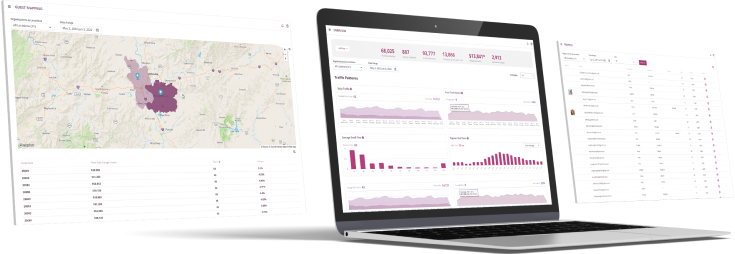
The Outcome: Enhanced Guest Satisfaction & Loyalty
One of the key elements in establishing long-term success for any restaurant is focusing on enhancing guest satisfaction and loyalty.
In an era where guest expectations are ever-increasing, creating a personal and engaging experience is not just a bonus, it’s a necessity.
Personalization Leads to Satisfaction
The integration of restaurant reservations with marketing enables restaurants to recognize individual guest preferences.
Whether they accommodate a favorite table, acknowledge a special occasion, or cater to dietary requirements, these personal touches make guests feel understood and appreciated.
Beyond the dining experience, personalized communication before and after a meal fosters engagement.
Sending a thank-you note referencing a specific dish enjoyed or offering a special incentive for the next visit builds satisfaction and encourages return visits.
Predictive Personalization Enhances Loyalty
Utilizing reservation data to understand and anticipate guests’ needs allows restaurants to cater to them proactively.
For example, analyzing reservation patterns and behavior can enable a restaurant to send targeted reservation reminders or special offers that are relevant to individual guests.
Personalized loyalty programs that resonate with a guest’s specific preferences make participation more appealing and impactful, leading to increased loyalty.
Seamless Experience Across Channels
In today’s interconnected world, guests often engage with a restaurant through various channels, including mobile apps, websites, social media, and in-person.
Ensuring a seamless and personalized experience across all these touchpoints enhances overall satisfaction. A unified guest profile that includes reservation history, engagement with marketing campaigns, and feedback can guide every interaction with a guest, making each one meaningful and building a continuous relationship rather than isolated transactions.
Building Trust Through Transparency
Trust is built through clear communication and setting proper expectations. Whether it’s about reservation confirmations, changes, or special offers, clear and timely communication fosters trust.
Additionally, the integrity with which a restaurant handles guest data, complying with privacy laws, and transparently communicating how data is used, can foster trust and goodwill.
Feedback and Continuous Improvement
Inviting and acting on feedback, especially when tied to specific reservations, sends the message that a restaurant values its guests’ opinions.
It’s a two-way relationship where feedback is not just collected but acted upon, leading to service improvements.
Regularly tracking satisfaction metrics and correlating them with reservation and marketing strategies encourages continuous innovation in guest engagement.

Enhancing guest satisfaction and loyalty is a multifaceted approach that requires attention to detail, personalization, anticipation of needs, seamless multi-channel experiences, trust-building, and continuous improvement.
By weaving these elements into every guest interaction, restaurants can transform the traditional dining experience into an ongoing relationship.
In the highly competitive restaurant landscape, loyalty is often secured by those who consistently pay attention to individual guest needs and preferences.
By integrating reservations with marketing and focusing on creating an authentic and engaging guest experience, restaurants not only meet but exceed guest expectations.
Ultimately, this approach doesn’t just lead to repeat business, it builds a community of loyal patrons who become brand advocates.
It shapes the restaurant’s reputation as a place that truly understands and values its guests, leading to long-term success and growth.
Online Reservation Marketing Benefits
There are many other benefits to offering online reservations.
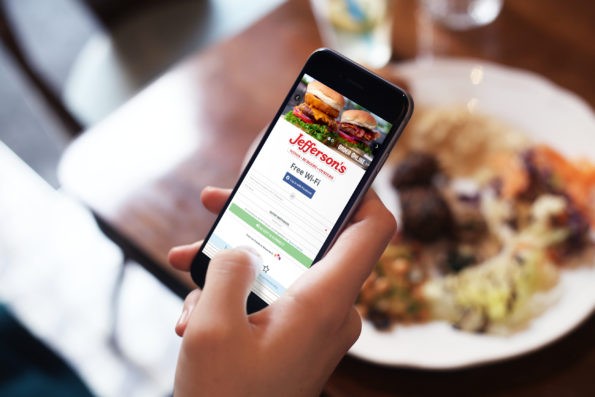
- Reduced wait times for guests: Patrons can reserve their tables in advance or schedule a time to pick up their food, so they don’t have to wait at your restaurant.
- Increased table turn accuracy: Guests can take their time to enter their reservations into the system, which reduces the chances of mistakes being made.
- Improved customer satisfaction: Make the dining process more efficient and less frustrating for guests, leading to much higher levels of satisfaction.
- Optimized seating: Reservations can help businesses optimize seating layouts, accommodate more customers, and provide more accurate wait times.
- Reduced labor costs: Automate the tasks involved in taking and fulfilling reservations, such as taking customer information and documentation, which can lead to reduced labor costs.
Not only will it improve your overall revenue and guest satisfaction, but it can also supercharge your restaurant marketing.
You can gather guest data such as their name, postal code, food and beverage preferences, and spending habits. With this data, restaurant reservation marketing becomes a possibility that can not only improve your marketing ROI, but also increase guest loyalty and lifetime values.
Users of systems like OpenTable can now easily integrate with Bloom Intelligence. This will allow them to pull all of this guest data into the Bloom platform.
Then it can be used to trigger specific marketing automation campaigns, such as sending a rating email to them at a configured time after their dining experience takes place. Or, using Bloom’s machine-learning algorithm or the number of days since their last order, you can even begin to identify and bring back lost guests.
The true value is that you can begin to understand your guest’s journey across platforms.
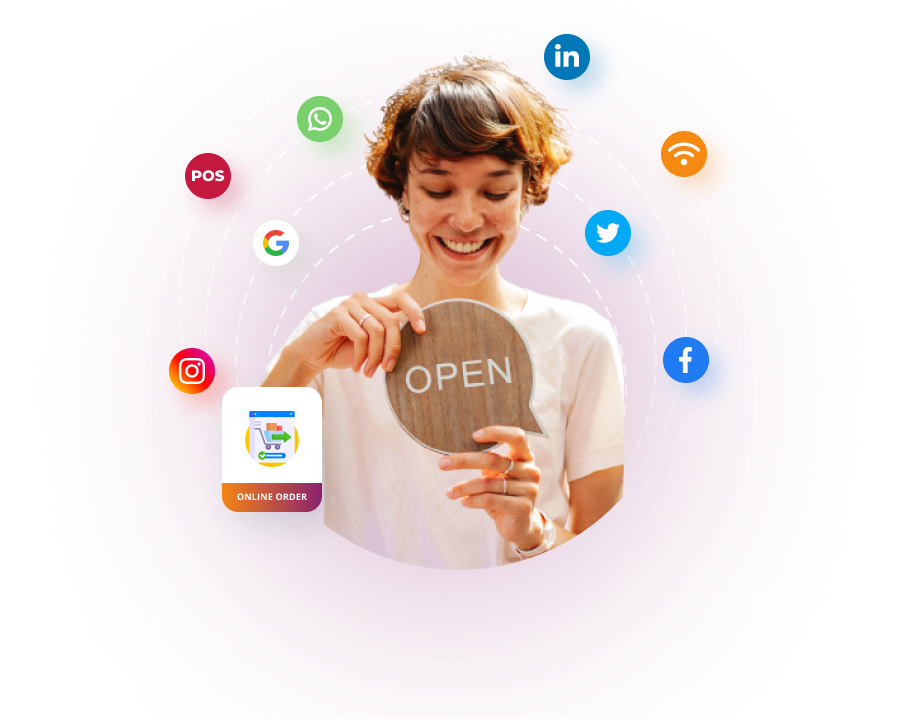
How Bloom Can Trigger Automated Reservation Marketing Campaigns
There are numerous automated online reservation marketing campaigns that can be configured in Bloom using the guest data you’ve gathered.
These campaigns can be triggered when a guest meets the pre-set campaign criteria.
For example, you might configure a campaign that sends a first-party survey to a guest, asking them to rate their experience. The email can be sent immediately after the reservation to rate their booking experience, or a couple of hours after their visit to rate their overall dining experience.
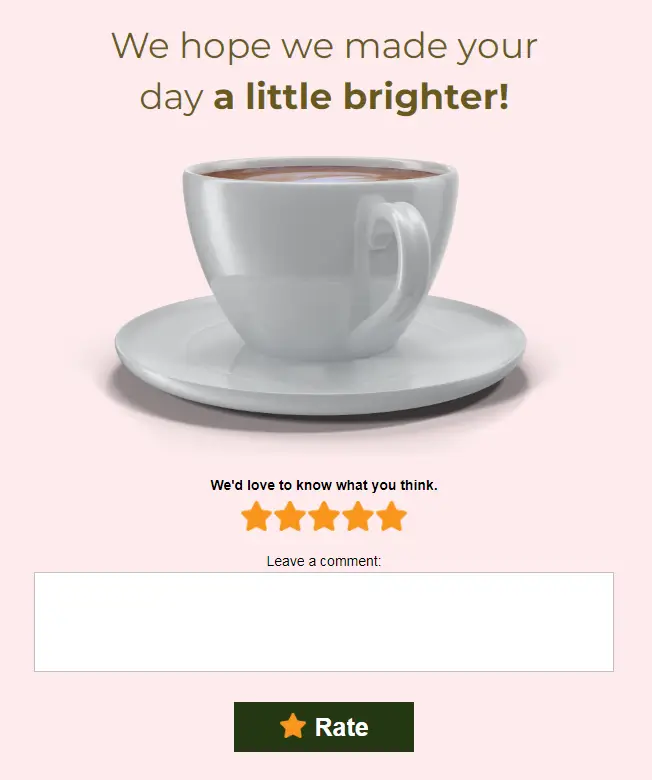
When the guest provides feedback, that data is captured in the Bloom platform in real time. This makes it easy to track, test, and optimize the campaign over time.
As stated earlier, another reservation marketing campaign you can initiate leverages Bloom’s machine-learning algorithm. Based on the guest’s visit history at your establishment and their reservation history, the system can identify guests who may not revisit or book a table online.
An automated message can be sent to remind the guest of a special event, a new menu item, or anything that might spark their interest. Some Bloom users even offer incentives, like a free drink or dessert, for example.
Bloom users have seen over 38% of their former guests return using this campaign, boosting customer lifetime values and significantly increasing revenue.
These personalized online reservation marketing campaigns can genuinely engage your guests, build trust and loyalty, and keep your restaurant at the forefront of their minds. All while saving you time, freeing you to focus on delivering the best service to your guests.
Click the banner below to download the case study.
Segmentation for Better Reservation Marketing ROI
An exceptional benefit of using Bloom integration with OpenTable is that the data you collect is consolidated into individual guest profiles.
These guest profiles quickly accumulate. Before you know it, you’ll have a large database of your actual guests, all with rich, verified, first-party data.
You can then filter and sort the list based on guest behavior and demographic information. For instance, you might compile a list of female guests who have reserved or visited your restaurant more than 5 times and typically come after 4 pm.
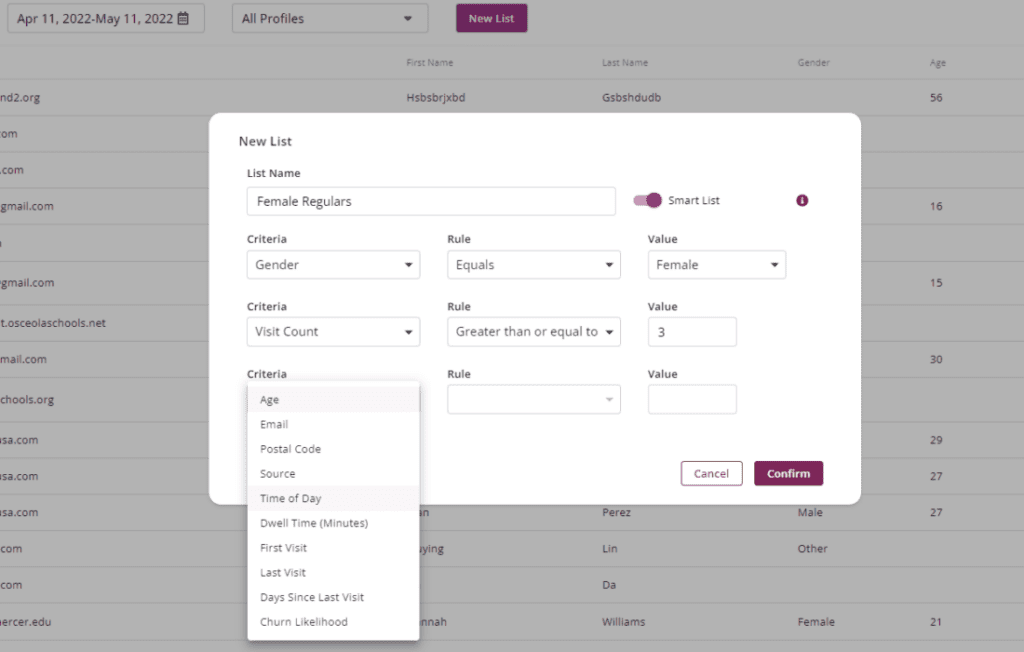
You’re free to create as many lists as you like. From there, you can craft specific messaging that resonates with the guests on each list.
Alternatively, create a list that represents your ideal customer profile, export it, and then import it into Google or Facebook to construct lookalike campaigns that help attract new guests.
By integrating your online reservation system with the Bloom Intelligence customer data platform, you can rapidly build a large customer database with first-party data.
You can then employ Bloom’s artificial intelligence-powered reputation management and marketing automation to boost your guest’s lifetime values – all while saving time.
Types of Reservation Marketing Campaigns
With marketing automation, all you have to do is configure the campaign once and it will execute behind the scenes automatically.
First, you create a message for the campaign that will be sent to your guests. Then, you configure the triggers that will cause the message to be emailed to the guest.
From that point on, your marketing message will be sent to each guest who meets the triggering criteria.
Examples
There are many different triggers and combinations.
- At-risk Guest Campaign – when guests have not ordered online in a given amount of time, or when they have surpassed their typical ordering time, send a message enticing them to come back.
- Upon-Ordering Campaign – configure a message to be sent to guests a specific amount of time after they order online. Send surveys, offers for future orders, and more. For example, send an immediate message asking how the ordering process went, or send a message 2 hours later requesting a response about their overall experience.
- Happy Birthday Campaign – this is one of the most popular and successful campaigns. The message would be sent to guests a few days prior to their birthday. Typically it will include an offer they can redeem on their special day.
- Survey Campaign – send a message to guests asking them to rate their recent experience. It can be sent at a predetermined time after they order online.
- Milestone Campaign – send a message with a reward for guests when they reach a particular milestone, such as the 10th time they order online.
- Upon Registration Campaign – send a thank you message to guests when they first sign up for online reservations.
- Upon Ordering Campaign – send any message you wish whenever guests order online. It can be configured to be sent a certain amount of time after the order, depending upon the topic of your message.
These are just a few of the marketing automation messages you can send to your guests for restaurant reservation marketing. You can also send triggered messages based on guest demographics.
Online Digital Advertising
Google and Facebook are moving away from cookie-based advertising. This means there is no way to target specific guests, or groups of guests, without uploading your own data.
With Bloom Intelligence, you can quickly build a large clean guest database to help you find new guests.
By building your own first-party guest database from online reservations, you will open up the opportunity to remarket to those guests online using Google or Facebook/Instagram ads.
One of the most effective ways to keep current guests coming back is to execute a remarketing campaign aimed at your current and past guests. With your own first-party data, this becomes very easy to do.
According to Signifi Media, the average click-through rate (CTR) for remarketing ads is 10 times higher than regular display ads.
The average CTR for retargeted ads is 0.7% compared to 0.07% for regular display ads.
A CTR of 0.7% is a significantly better conversion rate compared to other digital advertising strategies, which could make a powerful difference in restaurant marketing ROI and acquiring new guests.
Lookalike Campaigns for Google and Facebook
Creating lookalike campaigns on Google and Facebook is a relatively simple strategy. You export your list of guest data to Google or Facebook.
Then, these platforms will begin creating a list of other people who match the characteristics of those in your list.
A lookalike campaign takes an audience of existing guests and finds a whole load of new guests in the same demographics with similar tastes.
The idea is that these people are also likely to enjoy your service. Likewise, a good percentage of them will become loyal guests themselves.
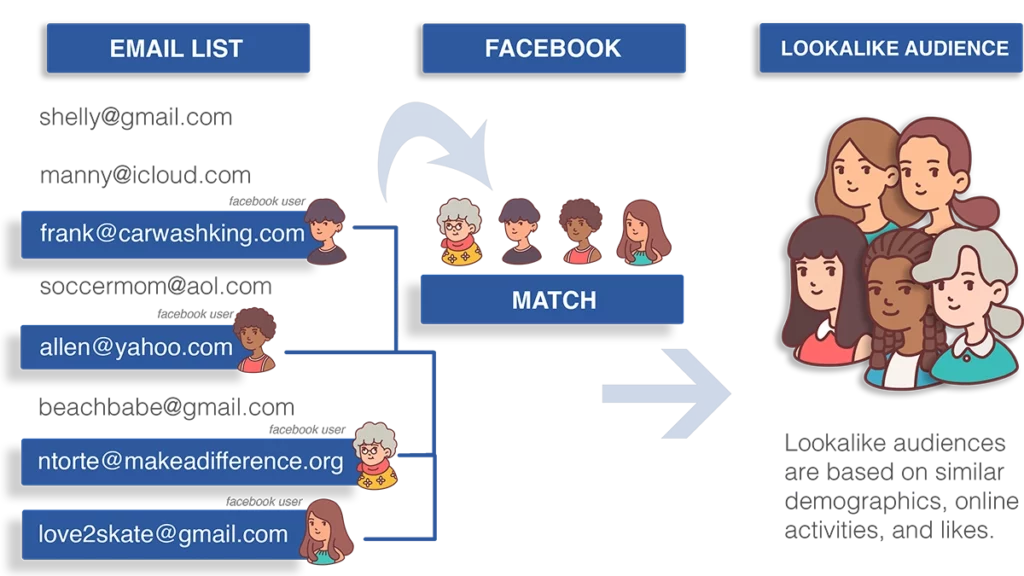
Once your lookalike audience has been established with a service like Facebook or Google Ads, your targeted marketing ads will be displayed to this new audience.
A successful lookalike campaign could unveil an entirely new market of guests similar to those who already enjoy dining at your restaurant.
And the key to creating a compelling campaign is to understand your own guests as thoroughly as possible.
Discover Bloom Intelligence
Bloom Intelligence can greatly enhance the effectiveness of your reservation marketing efforts.
Not only will you have access to a wealth of guest data to help shape your messaging and branding, but you will also be able to segment your guest list and target specific messages to specific groups. And all of this is automated to help you conserve time and money.
Bloom Intelligence provides WiFi marketing and analytics solutions tailored to drive guest engagement while measuring ROI on every campaign.
Repeat reservations translate into repeated profits. Start attracting them today!
In today’s competitive landscape, we can provide you with the competitive edge for success! Let us show you how.
- Call 727-877-8181
- Email us at sales@bloomintelligence.com
- Schedule a Demo
SAVE TIME, INCREASE CUSTOMER LIFETIME VALUES, CREATE NEW CUSTOMERS
What our happy customers
are saying
“SaaS that covered so many bases for us instead of having to use multiple software products. Bloom Intelligence has simplified our responses to reviews, customer feedback, and more. I highly recommend Bloom Intelligence.”
Robert Sanderson
“Bloom Intelligence really is a step ahead in terms of marketing software and metrics. Their product is reliable, fast and innovative and has helped the company I work for really grow.”
John Marchetti
“Working with Bloom Intelligence has been amazing. They assist you every step of the way and work with you hand in hand to make sure you are optimizing your advertising potential. We are excited to use this tool to help learn more about our customers so that we can personally engage with them and understand our strengths/weaknesses.”
Ariel Ramirez
“In these challenging times, it has been a pleasure working with Bloom Intelligence to help facilitate our service offering to our clients. They were extremely responsive and provided support to mitigate risk and minimize revenue loss. Great partner!”
Stefan Kim
“We’re extremely pleased with the wealth of customer data that we’re able to gather, at a very attractive price. In addition, we’re able to communicate our new product promotions by using the landing page as a digital billboard. A “no-brainer” for anyone working with limited Marketing $$.”
Bob Cross, Vice President of Operations
Bloom Restaurant Marketing FAQs
What Does CRM Stand For?
CRM stands for Customer Relationship Management database. To summarize, a CRM database is a collection of guest data grouped into customer profiles. So, a CRM can be used to understand your customer base, and for segmented, targeted marketing campaigns that can be tracked for accurate attribution.
What is a CRM Database?
A CRM Database is a digital collection of individual guest information grouped into customer profiles. Likewise, the database consists of detailed guest data such as names, behavior data, demographics, addresses, zip codes, emails, and phone numbers. As a result, these profiles are used to track communication and to remarket to guests.
What are Examples of a CRM Database?
An example of a CRM database for offline companies is the Bloom Intelligence CRM database. For example, using guest WiFi access points & guest WiFi landing pages, the platform collects guest behavior data, whether they log into WiFi or not, and builds detailed customer profiles for marketing and attribution. By comparison, other popular CRM’s include Salesforce, Microsoft Dynamic, and Hubspot.
How Do I Create a CRM Database?
For restaurant and retail locations, the easiest and best way to create a CRM database is to use your WiFi access points, Guest WiFi landing page, website widgets, and API’s to collect guest information and behavior data. Then, once configured, your guest data is collected and cleaned automatically.
The Power Restaurant Reservation Marketing

Optimize retail &
business operations

Track attribution of
customer campaigns

Trigger marketing
campaigns based on
marketing presence

Measure the health
of corporate & franchisee
locations

Compare locations or
group of locations to
quickly identify opportunities
or threats
Are you ready to grow
your business with
restaurant reservation
marketing and WiFi
marketing automation?
If so, find out how Bloom Intelligence’s WiFi analytics
& marketing platform measures offline guest
behavior and builds guest loyalty.
So, it’s time to start leveraging your guest WiFi to gain
a competitive edge. Then watch your profits grow.





